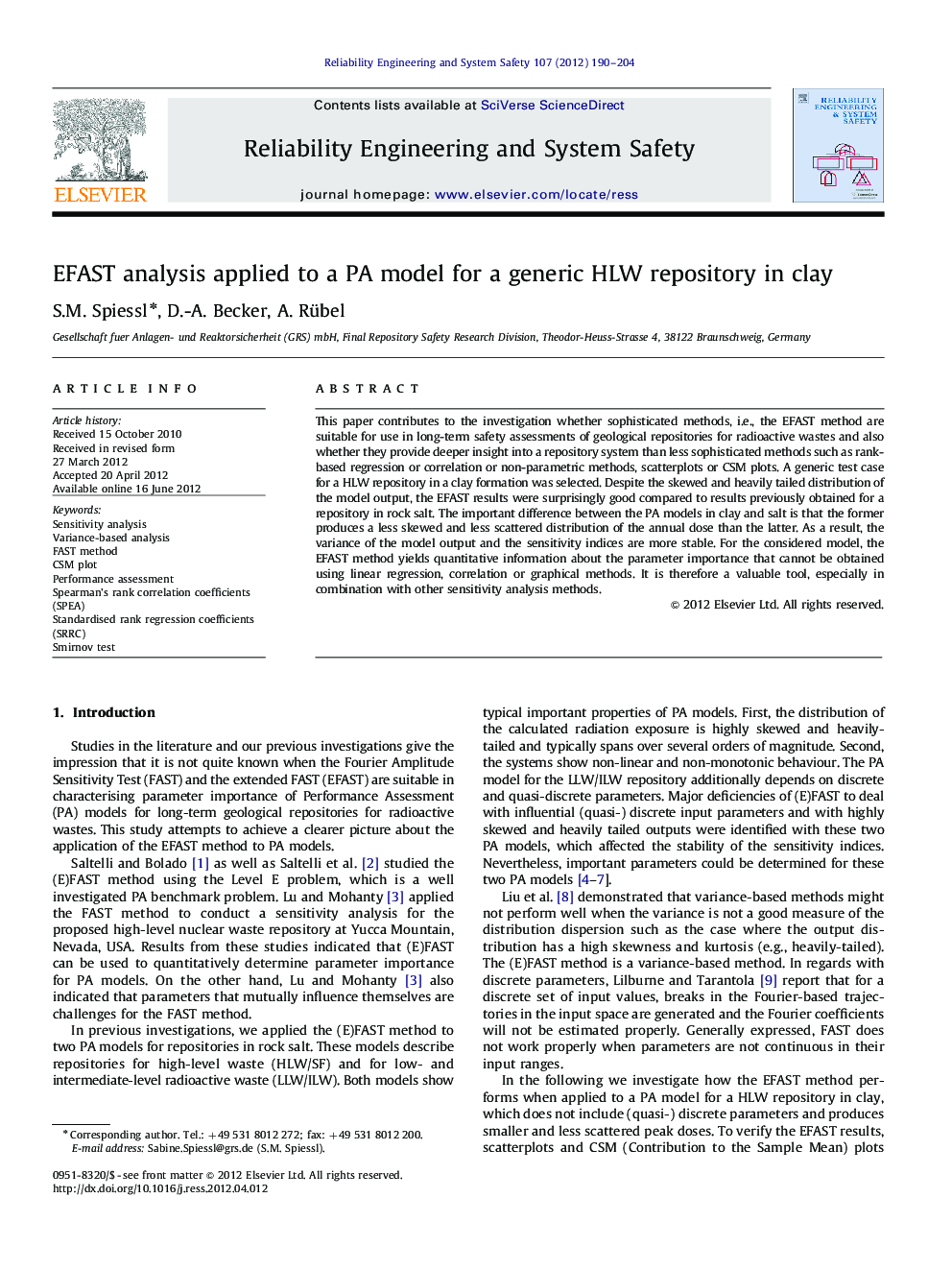| کد مقاله | کد نشریه | سال انتشار | مقاله انگلیسی | نسخه تمام متن |
|---|---|---|---|---|
| 806388 | 1468263 | 2012 | 15 صفحه PDF | دانلود رایگان |

This paper contributes to the investigation whether sophisticated methods, i.e., the EFAST method are suitable for use in long-term safety assessments of geological repositories for radioactive wastes and also whether they provide deeper insight into a repository system than less sophisticated methods such as rank-based regression or correlation or non-parametric methods, scatterplots or CSM plots. A generic test case for a HLW repository in a clay formation was selected. Despite the skewed and heavily tailed distribution of the model output, the EFAST results were surprisingly good compared to results previously obtained for a repository in rock salt. The important difference between the PA models in clay and salt is that the former produces a less skewed and less scattered distribution of the annual dose than the latter. As a result, the variance of the model output and the sensitivity indices are more stable. For the considered model, the EFAST method yields quantitative information about the parameter importance that cannot be obtained using linear regression, correlation or graphical methods. It is therefore a valuable tool, especially in combination with other sensitivity analysis methods.
► The reliability of EFAST results is examined by studying in particular the influence of sample size.
► The EFAST results are compared to the ones of rank-based regression and correlation methods.
► The EFAST results are also compared to the ones of scatterplots and CSM plots.
► The EFAST method can produce continuative information about parameter importance.
► Distribution of the model output can greatly influence the performance of the EFAST method.
Journal: Reliability Engineering & System Safety - Volume 107, November 2012, Pages 190–204